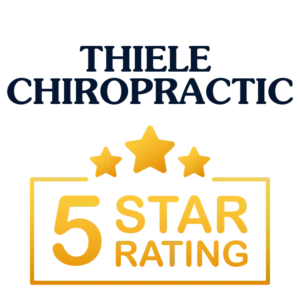- 39 New London Turnpike Suite 120 Glastonbury, CT 06033

Association Between Chiropractic Spinal Manipulation and Cauda Equina Syndrome in Adults with Low Back Pain: Retrospective Cohort Study of US Academic Health Centers
PLOS (Pubic Library of Science) ONE
March 11, 2024; Vol. 19; No. 3; Article e0299159
Robert J. Trager, Anthony N. Baumann, Jaime A. Perez, Jeffery A. Dusek, Romeo-Paolo T. Perfecto, Christine M. Goertz; from University Hospitals Cleveland Medical Center, Case Western Reserve University School of Medicine (Cleveland, Ohio), Duke University School of Medicine, Northeast Ohio Medical University. This study cites 68 references.
“The study hypothesis was that there would be no increase in the risk of CES [cauda equina syndrome] in adults with LBP following CSM [chiropractic spinal manipulation] compared to a propensity-matched cohort following physical therapy (PT) evaluation without spinal manipulation over a three-month follow-up period.”
“The present study was conducted because prior case reports and medicolegal cases described an onset of CES following CSM, yet there was no adequately powered and designed study to examine this potential association.”
The study used 67,220 patients in each cohort (DC and PT), for a total of 134,440 subjects, with a mean age of 51 years.
KEY POINTS FROM THIS ARTICLE:
1) “The cauda equina is a bundle of nerve roots arising from the spinal cord at the upper lumbar spine.”
2) “Compression of these nerve roots, typically by a disc herniation, can cause cauda equina syndrome (CES).”
3) “Signs and symptoms of CES include one or more of the following:”
4) “CES with neurological deficits is a medical emergency and surgical intervention is recommended within 48 hours to prevent permanent damage.”
5) “Cauda equina syndrome (CES) is a lumbosacral surgical emergency that has been associated with chiropractic spinal manipulation (CSM) in case reports.”
6) “CES has given rise to a substantial number of medicolegal cases within both the chiropractic and physical therapy (PT) professions, perhaps because these clinicians commonly manage LBP.”
7) “Concerns have been raised regarding documented cases of CES that occurred following chiropractic spinal manipulation (CSM).”
8) “Chiropractors are increasingly sought by patients in the US for the treatment of LBP.”
9) “Although CES is a rare event, lumbar disc herniation is its most common cause and is also frequently present among those with LBP.”
10) “Chiropractors may encounter patients who have a heightened risk of developing CES, as these clinicians treat those with LBP and disc disorders.”
11) “Mild adverse events related to CSM, such as transient soreness, are accepted to be common and occur in 23–83% of patients.”
12) The existing literature on CES from CSM “is mostly derived from individual case reports.”
13) “The chiropractic scope of practice is legally regulated, and each US state requires continuing education credits.” [Important]
14) The authors are unaware of any cases of CES following CSM in pediatric patients.
15) While CES typically arises from the lumbosacral region, medicolegal reports have documented CES occurring after thoracic CSM.
16) CES has the potential for a delayed diagnosis.
17) “A self-controlled case series found that patients who underwent emergency surgery for acute lumbar disc herniation had a similar increase in likelihood of visiting either primary care providers or chiropractors prior to the surgery, suggesting that CSM was not a risk factor for lumbar disc herniation.” [Article Review 12-19: Chiropractic Care and Risk for Acute Lumbar Disc Herniation]
18) “Another study found that patients with radicular LBP who underwent CSM were less likely to require disc surgery over the subsequent two years compared to matched controls receiving usual medical care.” [Article Review 10-23: Association Between Chiropractic Spinal Manipulation and Lumbar Discectomy in Adults with Lumbar Disc Herniation and Radiculopathy
19) Findings:
20) “Patients with LBP have an inherently higher risk of CES compared to asymptomatic individuals.”
21) Conclusions:
22) “These findings pertain to spinal manipulation administered by trained chiropractors rather than other practitioners or laypersons, considering cases of severe adverse events including spinal fracture and CES have been reported following spinal manipulation by untrained individuals.”
23) “These findings underscore the increased CES incidence within the first two weeks after either CSM or PT evaluation, emphasizing the need for clinicians’ vigilance in identifying and emergently referring patients with CES for surgical evaluation.”
24) “Clinicians should be vigilant to identify LBP patients with CES and promptly refer them for surgical evaluation.”
This is the section in our Informed Consent:
Cauda Equina Syndrome: Cauda Equina Syndrome occurs when a low back disc problem puts pressure on the nerves that control bowel, bladder, and sexual function. Representative symptoms include leaky bladder, or leaky bowels, or loss of sensation (numbness) around the pelvic sexual organs (the saddle area), or the inability to start/stop urination or to start/stop a bowel movement. Cauda Equina Syndrome is a medical emergency because the nerves that control these functions can permanently die, and those functions may be lost or compromised forever. The standard approach is to surgically decompress the nerves, and the window to do so may be as short as 12-72 hours, depending. If you have any of these symptoms, tell us immediately, and if we can’t be reached, go to the emergency department immediately.

39 New London Turnpike Suite 120
Glastonbury, CT 06033
